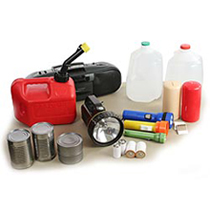 Some natural disasters can be forecast — hurricanes, snow storms and, in some cases, flooding. Other disasters occur unexpectedly, such as tornadoes and earthquakes.
Some natural disasters can be forecast — hurricanes, snow storms and, in some cases, flooding. Other disasters occur unexpectedly, such as tornadoes and earthquakes.
As a homeowner or renter in Columbus , it’s a safe idea to prepare for disaster or unexpected emergency. Every home should maintain a ready, working emergency kit for such a time.
Here are some items to include in your home’s emergency kit :
- Waterproof Container : Store items in a locking, plastic container
- Battery-Powered Radio : A small radio can receive weather updates and emergency broadcasts. Pack extra batteries, or use a hand-crank radio, instead.
- Light Source : Pack multiple flashlights and many spare batteries. LED flashlights are more expensive than “older” flashlights, but won’t lose battery power as quickly. Pack candles and matches, as well.
- Water : Pack bottled water, storing larger bottles in a cool, separate place. Add several bottles of sport drink for variety, if desired.
- Food : Pack non-perishable food such as canned fruits and vegetables; protein sources such as peanut butter or canned tuna; crackers and cookies; nuts and dried fruits. Remember to pack a can-opener, if needed. Include plastic utensils, if necessary.
- Blankets : At least two blankets should be packed. Consider packing multiple sets of clothes, for different temperatures and seasons.
- First-Aid Kit : A proper first-aid kit should include antiseptic, bandages, aspirin, an ace bandage, and allergy medicine for allergic reactions.
- Emergency Contact List : Include a list of your local utility companies; phone numbers at which to contact friends and loved ones; and, your primary care physician’s number.
After packing your emergency kit, make sure to store it in an easy-to-reach location away from power lines, power sources, and any place that may be “extra dangerous” during a crisis. For example, storing an emergency kit in a garage or a shed may be safer than storing it in a basement or in a bedroom closet.
In an emergency, a little bit of preparation can go a long way. Be prepared and be safe.
